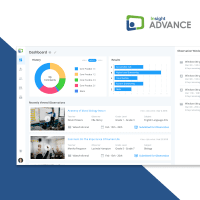
Confidence comes from the Latin word “fidere,” which means to trust. In the realm of product development, trust is paramount. You place your faith in a team to design and build software that will drive customer satisfaction and business success. But how do teams develop the confidence needed to ensure they are building the right solutions? Let’s explore this concept using a metaphor from the world of football.
The Football Metaphor: Building Confidence in Teams

Imagine a football team on the field, each player’s confidence directly impacting their performance. Similarly, in product development, team confidence influences the quality and success of the outcomes.
- Hesitation Causing Delays: Just like a player who second-guesses a pass and misses opportunities, a development team that hesitates can lead to procrastination and delays in the project timeline.
- Poor Performance: A player not fully committed during a match results in weak plays. In terms of a development team, lacking commitment can produce subpar products, far from their best potential.
- Missed Opportunities: When a player is unsure and doesn’t take a clear shot on goal, they let golden opportunities slip. In product development, uncertainty can cause teams to miss key opportunities for innovation and market success.
- Stress and Anxiety: Self-doubt on the pitch can wreak havoc on a player’s mind, causing stress during crucial moments. In development, self-doubt can lead to stress and anxiety, affecting overall performance.
- Reduced Motivation: A player who loses confidence may also lose their passion for the game, leading to decreased motivation. Similarly, a development team that lacks confidence in their abilities may experience a drop in motivation and drive.
Lessons from Working with Over 100 Clients: Insights You Can Apply Anywhere
We’ve had the privilege of working with over 100 clients across various industries. Through these experiences, we’ve distilled key practices that build confidence and lead to successful product development.

1. Kickoff Correctly: Solutions Back to Problem/Opportunity
A strong project kickoff ensures that everyone is aligned and understands the problem or opportunity at hand. Here’s how to do it:
- Verify the Problem/Opportunity: Ensure the problem or opportunity is real and significant. Quantify the impact of doing nothing.
- Involve the Right Stakeholders: Identify and involve the project sponsor and key stakeholders from the start. Their involvement ensures alignment and commitment.
Clarify Objectives and Goals:
Set clear objectives and goals for the project, ensuring everyone understands what success looks like.
2. Validate Your Assumptions: Success in Invalidating
Every project is built on assumptions. Validating or invalidating these assumptions early can save significant resources and effort.
- Create a Validation Framework: Establish a framework for validating assumptions. This can include prototypes, user testing, and market research.
- Celebrate Invalidations: View invalidating an assumption as a success. For example, we invalidated a product idea for a major telecommunications company, saving them several million dollars.
Pivot Early:
If assumptions are invalidated, pivot early and adjust the project direction to avoid wasting resources on a doomed initiative.
3. Data, Data, Data: Use it Wisely
Data is invaluable in guiding decisions, but it’s important to use it wisely to avoid analysis paralysis.
- Identify the Problem: Start with a clear understanding of the problem you are trying to solve.
- Ideate Solutions: Generate potential solutions based on data insights.
- Validate Ideas: Test and validate ideas using data, but be prepared to move forward even if you don’t have 100% certainty.
Embrace Incremental Success:
Start small, gather feedback, and build confidence through incremental successes. Small wins pave the way for larger achievements.

4. Responsibly Scaling Systems
Scaling a system requires careful planning and execution to avoid systemic failures.
- Phased, Iterative Rollouts: Approach scaling iteratively, breaking down problems into smaller components.
- Use Feature Toggles: Incorporate feature toggles to manage functionalities seamlessly and reduce risk.
- Monitor and Adjust: Continuously monitor performance and make adjustments as needed to ensure stability.

5. Transparent Communication
Open communication is key to building trust and ensuring everyone is on the same page.
- Maintain Open Lines of Communication: Keep communication channels open between developers, stakeholders, and end-users.
- Report Issues Promptly: Establish clear channels for reporting and addressing issues quickly.
- Foster a Culture of Transparency: Encourage transparency and accountability to build a culture of collaborative problem-solving.
6. Continuous Learning and Adaptation.
The technology landscape is constantly evolving, and continuous learning is essential to stay ahead.
- Foster Continuous Improvement: Regularly reassess and adapt development practices based on feedback and industry best practices.
- Prioritize Training and Development: Invest in ongoing training and professional development for your team.
- Encourage Cross-Functional Learning: Promote learning across different functions to build a holistic understanding of the system.
7. User-Centric Design and Testing
Prioritizing user needs and feedback is crucial for building successful products.
- Incorporate User Feedback: Gather and incorporate user feedback throughout the development lifecycle.
- Implement User Acceptance Testing (UAT): Ensure that the system aligns with user expectations and needs through rigorous UAT.
- Focus on User Experience: Design with the user in mind to enhance adoption and satisfaction.

Lionel Messi knows how to strategize and consider his team when making effective plays which is just as important when it comes to efficient innovation in product development. By embracing a comprehensive set of strategies, including phased approaches, quality integration, responsible scaling, transparent communication, continuous learning, and user-centric design, the industry can learn from past mistakes. This multifaceted approach not only guards against catastrophic outcomes but also fosters a culture of innovation, resilience, and adaptability in the dynamic landscape of software development. We have found that disciplined adherence to these principles allows us to show up with confidence every day and perform at our best. Just like a confident football team that shoots and scores, we aim to deliver top-notch products that exceed expectations.
We’d love to hear your thoughts on building confidence in your teams and products. Share your experiences and join the conversation on building a culture of trust and excellence in product development.

Pek Pongpaet
Helping enterprises and startups achieve their goals through product strategy, world-class user experience design, software engineering and app development.
|
-

“Impekable delivered multiple, fantastic options for us… they genuinely cared about the project and our goals.”
Co-founder, JSwipe, acquired by Tinder
Our Case Studies





